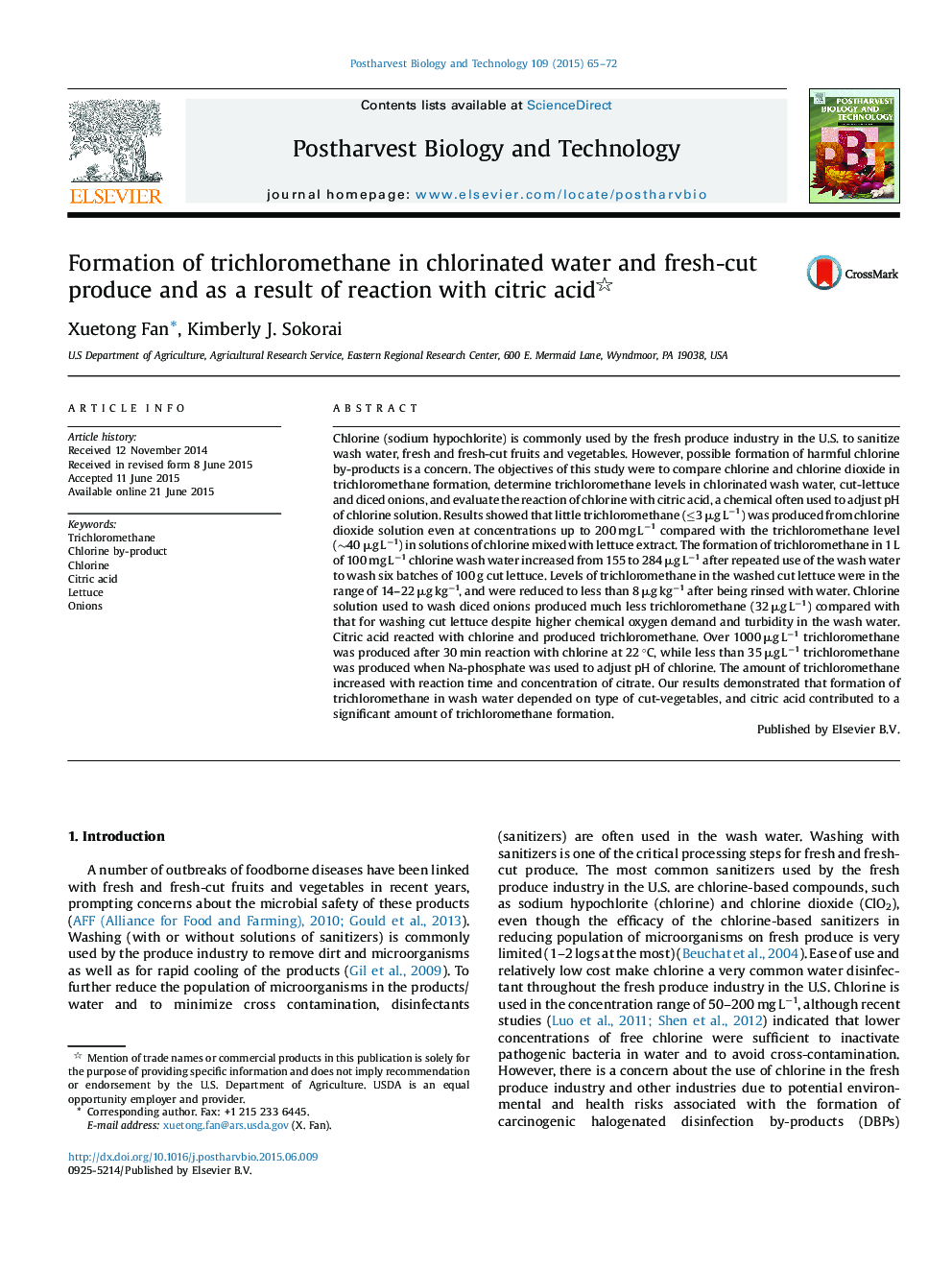| کد مقاله | کد نشریه | سال انتشار | مقاله انگلیسی | نسخه تمام متن |
|---|---|---|---|---|
| 4517959 | 1624985 | 2015 | 8 صفحه PDF | دانلود رایگان |
• Higher level of trichloromethane in wash water for cut lettuce than for diced onion.
• Citric acid reacted with chlorine and produced high amounts of trichloromethane.
• Commercial fresh-cut products had low levels of trichloromethane.
Chlorine (sodium hypochlorite) is commonly used by the fresh produce industry in the U.S. to sanitize wash water, fresh and fresh-cut fruits and vegetables. However, possible formation of harmful chlorine by-products is a concern. The objectives of this study were to compare chlorine and chlorine dioxide in trichloromethane formation, determine trichloromethane levels in chlorinated wash water, cut-lettuce and diced onions, and evaluate the reaction of chlorine with citric acid, a chemical often used to adjust pH of chlorine solution. Results showed that little trichloromethane (≤3 μg L−1) was produced from chlorine dioxide solution even at concentrations up to 200 mg L−1 compared with the trichloromethane level (∼40 μg L−1) in solutions of chlorine mixed with lettuce extract. The formation of trichloromethane in 1 L of 100 mg L−1 chlorine wash water increased from 155 to 284 μg L−1 after repeated use of the wash water to wash six batches of 100 g cut lettuce. Levels of trichloromethane in the washed cut lettuce were in the range of 14–22 μg kg−1, and were reduced to less than 8 μg kg−1 after being rinsed with water. Chlorine solution used to wash diced onions produced much less trichloromethane (32 μg L−1) compared with that for washing cut lettuce despite higher chemical oxygen demand and turbidity in the wash water. Citric acid reacted with chlorine and produced trichloromethane. Over 1000 μg L−1 trichloromethane was produced after 30 min reaction with chlorine at 22 °C, while less than 35 μg L−1 trichloromethane was produced when Na-phosphate was used to adjust pH of chlorine. The amount of trichloromethane increased with reaction time and concentration of citrate. Our results demonstrated that formation of trichloromethane in wash water depended on type of cut-vegetables, and citric acid contributed to a significant amount of trichloromethane formation.
Journal: Postharvest Biology and Technology - Volume 109, November 2015, Pages 65–72
